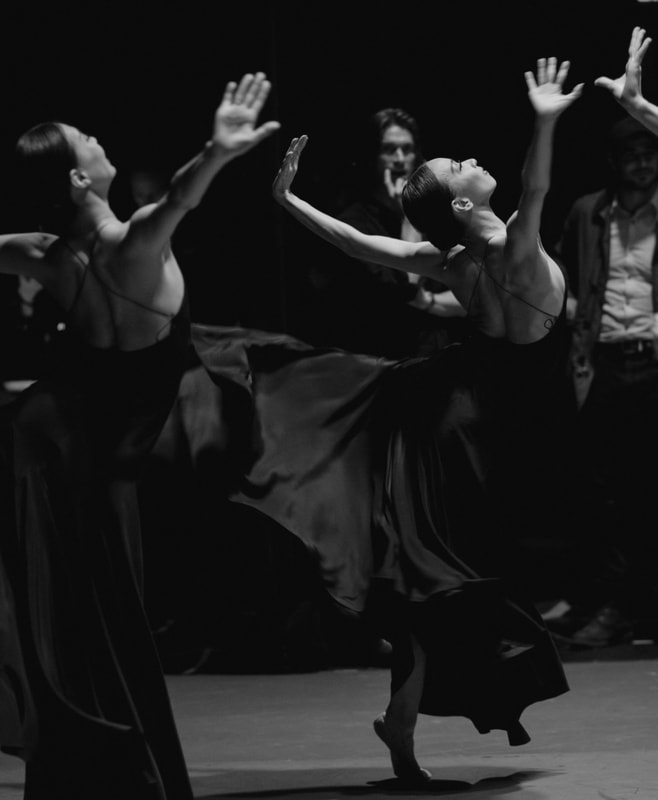|
New Jersey Ballet performs Harrison Ball's "Purcell Suite" on Sunday at Kaatsbaan Cultural Park. What’s missing when a group of people are oppressed? The answer is unknowable. But what is certain is something has gone missing. Something is lost.
That’s what choreographer Roderick George, or kNonAme Artist, was driving at in his “The Missing Fruit,” a work presented by his contemporary ensemble on Sunday afternoon at Kaatsbaan Cultural Park’s spring festival. The forceful piece with intriguing vocal and electronic music by the duet Slowdanger, played live onstage, reflects how, despite one’s effort to rise, there is always someone to push one back down – especially if that one is Black, Indigenous or a Person of Color. The dancers began their journey with a slow walk, like a sleepwalker, and then fell to the floor -- dormant but active. As a few stood, they were met with a figure in a white skirt who challenged them. He swung his legs over their ducking heads and assertively lorded over them with his wide stand and hands on his hips. Despite their pushback, he stood firm. Between moments of aggression, the dancers walked with tiny step, as if to tip toe silently into the rightful place in life. George’s told this story with quiet explosions that turned combative – mixing ballet, marital arts with African rhythms that included swinging lifts that whirl dancers around their partners shoulders. While there was no resolution to the problem George posed, aside from mass exodus, the work definitely piqued my interest in his work. I hope a longer program of his pieces will return to the region. He’s an artist with a message, an artist for our time. I’m also interested in watching the evolution of New Jersey Ballet, which was also part of Sunday’s program. Under the director of former New York City Ballet superstar Maria Kowroski, the company will likely grow in both artistry and stature. As artistic director, Kowroski already brought in newly retired City Ballet colleague Harrison Ball. He created “Purcell Suite” from music from Purcell’s heart-breaking opera “Dido and Aeneas,” the company’s offering to the program. At first, I thought the piece, danced in slippers, not pointe shoes, was a darker version of George Balanchine’s “Serenade” as similarities were obvious. For example, Ball designed loads of port de bras and swells of 12 female dancers who assembled and dispersed, with the simplicity and beauty of Balanchine's first American ballet. The work was pleasant and the dancers seemly lovely. But I'm sure Kowroski will elevate everything about this now minor ballet company. Finally, the afternoon featured a duet from Trisha Brown Dance Company. “Rogues,” with music to Alvin Curran, was classic Brown – an accumulation of pedestrian movement that hit with a weighty, fluid swing. As danced by Patrick Needham and Jennifer Payan, the piece exuded a purposeful laborer’s feel – physical work done with craftsmanship precision. “Rogues” showed off both choreographer and dancer's skills. While this was a satisfying program, Kaatsbaan remains a challenging venue. Last week, the audience got soaked with rain. This week, they were semi-blinded by the sun. So if you go, wear a hat and sunglasses.
0 Comments
Leave a Reply. |
Wendy
|

 RSS Feed
RSS Feed
